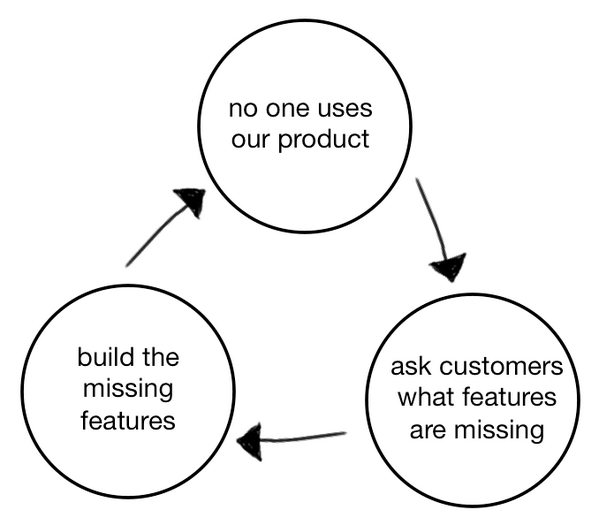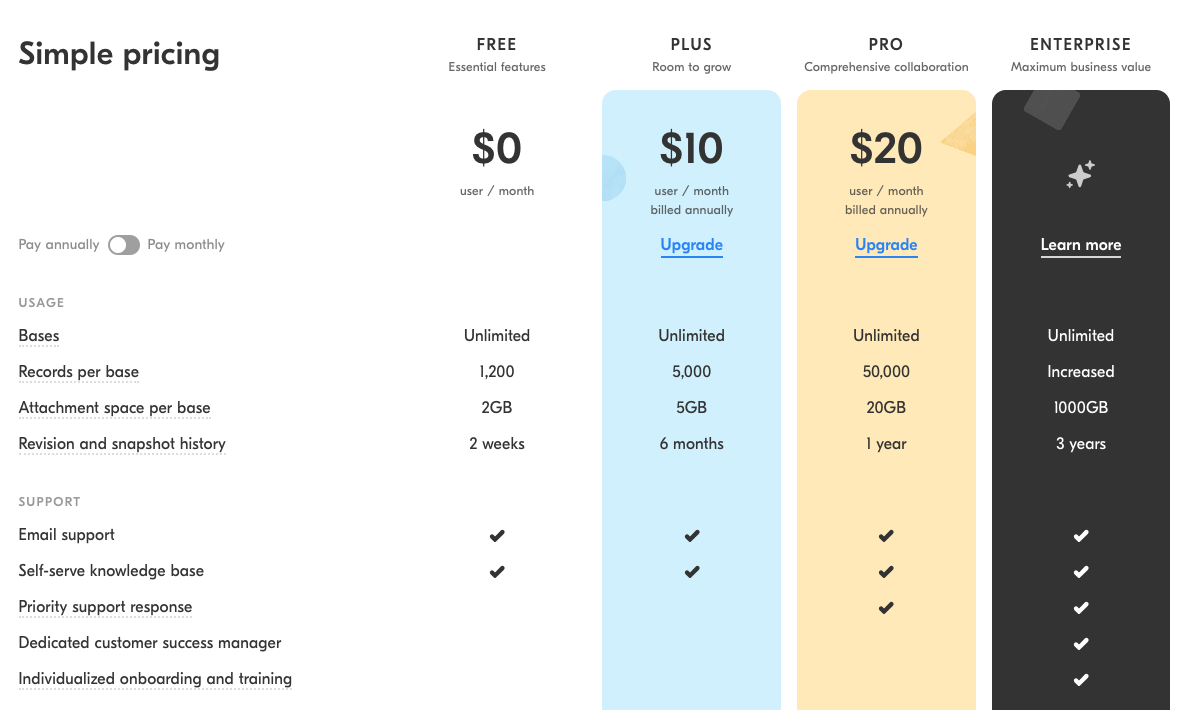11 types of customer fit for predicting customer success

.png)

.png)
“You know, I’m on the fence about how much you’d benefit from this.”
This was the response I got from a business coach when I inquired about her business development course.
See, compared to her target audience, I’m a little ahead of the game when it comes to things like identifying my ideal customer, defining my value proposition, and honing my messaging to attract and convert (okay, okay, I could probably be teaching the business course). But this woman had a different approach and her marketing had been impressively spot-on.
I thought I could learn something from her. And her honest response impressed me even more.
Even if I don’t need the course, I will be recommending it to my friends. Because that is the power of establishing fit—even bad fit.
That business coach was more interested in ensuring that her clients would succeed than in selling another seat in her class. Which makes sense, because her marketing heavily relies on social proof (testimonials from past successful students) and she wouldn’t have those testimonials if she didn’t carefully select students with…
Success potential.
Was she losing money by telling me I’m not a good fit? No. She was laying the foundation to make even more money—with less effort—by only working with clients who need exactly what she offers.
Many SaaS companies could learn a thing or two from this savvy business coach. Because customer fit can make or break your company—fast.
When we talk about fit, it’s often in the context of company culture—a term co-opted by HR to find employees most likely to succeed You might say, HR uses cultural fit as a tool to predict the success potential of job applicants.
When we start to think about fit as a predictor of success potential, however, new avenues open up for identifying the right customers for your product—the ones who’ll use it, love it, and advocate for it.
Yes, we are talking about product-market fit, but not in the way you’ve read about it before. In this article, we’re going to explain the ways a customer should fit to get the best results, and yield the highest lifetime value.
Success potential is the foundation of Customer Success—in order for CS to function, you have to have customers capable of achieving success in the first place.
Bad fit customers can wreak havoc on your company’s own success. That’s because:
Just a few bad fit customers can take up a TON of your customer service department’s time and hog the attention of their customer success managers.
Worst of all, bad fit customers often suggest changes, updates, improvements and add-ons to your product.
If you listen to them—if you try and re-make your product to work for customers who don’t have success potential—you’ll end up careening into the Product Death Cycle.

The Product Death Cycle begins when you see a lot of churn and start to panic.
Your mind begins to race as you feverishly type into your product dev Slack channel: “MEETING NOW!” And you and your product development team try to troubleshoot why people are leaving in droves and finally land on the conclusion that there must be a missing feature.
Then, naturally, because you listen to your customers, you ask your churning customers what features they need so you can build them to fix the problem.
But in fact, the problem probably doesn’t lie in the features you do or don’t have. It’s very likely an issue of attracting and converting customers who never could have succeeded with your product in the first place.
So you build the features anyway in a panic-driven attempt to appeal to everyone and drain your resources in the process And it doesn’t work, because that was never the real cause of the churn.
Now, that’s the worst case scenario. But even if you haven’t poured a bunch of dev resources into building new features for a few churning customers, you still may be wasting valuable resources trying to make the wrong customers “happy.”
You may be thinking: “Well, gee, wouldn’t bad fit customers just… leave?”
Eventually yes. But here’s the thing: Even bad fit customers want to find success with your product.
I bought a pair of fabulous Fluevog boots five years ago and it took me months of blisters to finally figure out they weren’t comfortable. Your bad-fit customers will try to change you —to “break you in”—before they stuff you in the back of their proverbial closets.
Bad fit customers are bad for business. But not every customer with a potential for success will succeed, either. Your job as a business owner, product developer, customer success manager, or even marketer is to sift through all of the prospects and find the ones who have what it takes to achieve greatness with your product.
Just like one size never fits all, there isn’t just one type of fit. Customer Success consultant Lincoln Murphy suggests no less than 6 types of customer fit:

Now, what’s interesting about Lincoln’s list is that it’s really divided into two categories. Technical, functional, resource, and competence fits all fall into what Lincoln calls “required outcomes.” Required outcomes are the jobs the customer needs to be able to do—these are steps towards the bigger-picture “desired outcome,” the goal that you’re trying to help your customers achieve.
But cultural and experience fits are different. Those speak to “appropriate experience,” or how the customer needs to be helped in order for them to achieve their desired outcome.
While other types of fit establish whether a relationship will or won’t work, appropriate experience establishes how the relationship will work best.
Let’s say you have a customer who is ready to buy and they have a big company with many departments, which is great because you charge per user. You stand to make bank. But your company doesn’t have enough onboarding specialists or customer success managers for such a large account, and early indications suggest that these people expect a lot of hand-holding. You won’t be able to provide the appropriate experience that this customer expects and needs.
Even though you wish it was, it’s not a good fit.
Let it go.
“But wait!” you say—you don’t want to just “let it go.”
Okay, there is another option. Use appropriate experience segment customers into different types of CS experiences.
The important idea at work here is that you have to provide the experience that is appropriate for each customer to succeed. One type of customer, like our big-business example above, might require a higher-touch experience with their own designated CSM to guide them. Another type of customer may need higher touch during onboarding, but are happy to figure out the rest themselves. Another type of customer may not have the resources to afford the full-service treatment but are willing to go through your educational materials and DIY their own customer service.
Each of these customers has a different appropriate experience, and each has success potential if that experience is delivered.
So why not use appropriate experience as a customer segmentation device?
This is a significant paradigm shift from how many companies currently segment customer experiences. Many SaaS companies segment customers along simple monetary lines:

We’re not segmenting customers by how they’ll best succeed, but by how much they pay. It seems logical, from the business side. But it won’t help your company grow as quickly. This is true for two reasons:
That isn’t to say that appropriate experience is the only way you should segment customers, but it is one of the more useful ways to segment for customer success.
You would think 6 types of fit would be enough. But once I opened up the discussion to SaaS business founders, growth hackers, and marketing consultants, we uncovered even more.
Here are 5 more ways to check for customer fit:
Omer Molad, CEO & co-founder of Vervoe, says that while functional, resource, and experience fit are fundamental, his customers need one more type of fit to get the most out of their online hiring assistant platform:
We don’t look for people who fit into our culture, we look for people who buy into our mission and contribute to our culture. We want people who think differently and bring fresh ideas and perspectives to the table.
Tiffany Da Silva, founder of Flowjo, suggests a more psychological approach to customer fit:
I try to understand what motivates them and whether they are genuine. If you don’t understand someone’s motivations of why they are doing things, you won’t be able to get the results you want. Whether it’s that they want to make the board happy, or to drive crazy results they can speak about at conferences. There are always internal motivations that drive the kind of results we seek.
To establish psychological fit, Da Silva asks questions aimed at figuring out the client’s mindset, motivations, and emotional factors.
Dario Cardile, senior marketing executive and online & digital strategist, says fit should include a common set of metrics.
Successful businesses leverage data and analytics to outperform the competition and innovate faster with increased precision. As the employees share a core set of values (cultural fit) they also need to share a core set of metrics (KPIs) on which they can base their performance and overall business (analytical fit).
A common understanding and mutual fit helps to grow the company at speed. And the same fit should be reflected in the relationships with their clients. How do they measure success and how do we support that?
Agreeing on a common set of Key Performance Indicators should be standard practice for every company/customer relationship, whether you call them KPIs or “success milestones.”
Make sure everyone agrees on what success looks like.
A branch of technical fit, sometimes the tools or working methods you and your clients use have to match up. Fio Dossetto, content marketer and editor at Hotjar, explains:
At Hotjar, we work in an agile fashion with tools such as Jira and Trello; so you could speak of a ‘technical fit,’ or an ability to jump on board and use the same tools, or of a ‘working methods fit’ - an appreciation and use of the agile approach.
She recommends breaking it down even more into:
Technical fit - an ability to use, or learn how to use, similar tools and a clear understanding of why they are used.
Behavioral fit - an ability to empathize with people’s different ways of approaching a task, and work in a mutually supportive fashion.
Competency fit - when the company clearly identifies a gap in existing skills and expertise, the right person is the one that can fill the gap.
Trevor Hatfield, founder and CEO at Inturact, a SaaS marketing agency, says he often sees issues arise around “authority fit.”
Basically if your product's target customer is someone who needs buy-in from their bosses to complete the steps necessary to reach their desired outcomes, there has to be that authority fit. For instance. If the product is helping small or mid-sized businesses create better proposals, the person that creates them may need their manager to confirm the proposal prices, or at least approve of them before the proposal gets published and used.
You see this a lot when you have account managers who are forward-thinkers and want to try out new things, but their bosses are old-school and hesitant to venture into unknowns.
You can have the best solution in the world, but if there’s a person up the chain of command who is averse to trying new things, it’s not a fit—even if your direct contact is a perfect fit in every other way.
Once you start speaking with business owners and consultants, or even your own team, you’ll discover that every business really has to define “fit” for themselves.
Ask yourself:
What types of fit are most important in predicting the success of your ideal customers? How can you use that criteria to segment customers more effectively, to ensure they get exactly what they need to succeed?
...
[Editor's note: We have updated an older version of this article, which was originally published in November 2017. Hope you enjoyed it!]